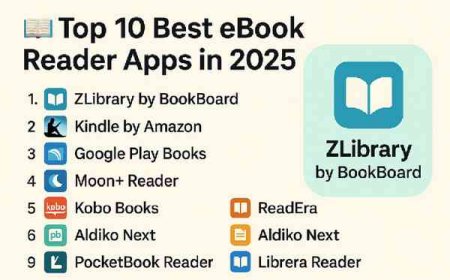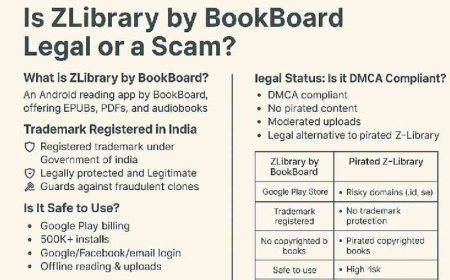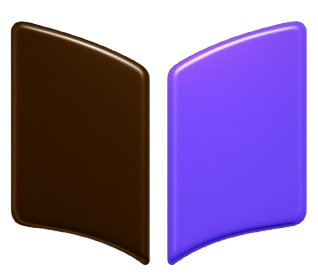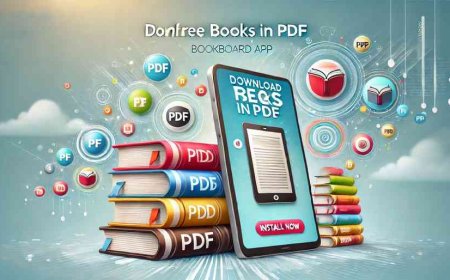How to Self-Publish a Book Successfully | Step-by-Step Guide (2025)
Learn how to self-publish a book successfully with this step-by-step guide. From writing to Amazon KDP publishing, marketing, and beyond. Perfect for beginners.

How to Self-Publish a Book Successfully (Complete Step-by-Step Guide for Beginners)
Self-publishing has transformed the publishing industry. Gone are the days when aspiring authors had to send countless query letters to traditional publishers, hoping someone would give them a chance. Today, anyone with a story, idea, or knowledge can publish a book and reach a global audience, thanks to self-publishing platforms and digital tools.
But here’s the truth: while self-publishing is easier than ever, successful self-publishing requires planning, strategy, and persistence. Uploading your manuscript to Amazon KDP or IngramSpark is just one small part of the journey. To make your book stand out and generate sales, you need to master everything from writing and editing to marketing and distribution.
This step-by-step guide will walk you through how to self-publish a book successfully — with actionable tips, tools, and resources. We’ll also show you how apps like ZLibrary by BookBoard can help authors and readers alike in the self-publishing journey.
Why Choose Self-Publishing?
Before diving into the steps, let’s clarify why so many authors are choosing the self-publishing route:
-
Creative control – You decide the title, cover, price, and marketing strategy.
-
Faster publishing timeline – No waiting months or years for a publisher’s approval.
-
Higher royalties – Self-published authors can earn up to 70% royalties compared to 10–15% in traditional publishing.
-
Global reach – Platforms like Amazon KDP, Kobo, and Google Books instantly distribute worldwide.
-
Evergreen availability – Your book never “goes out of print.”
Self-publishing is empowering, but it’s also competitive. That’s why you need a step-by-step approach.
Step 1: Define Your Book’s Purpose and Audience
Every successful book begins with clarity. Ask yourself:
-
What’s the purpose of this book? (to entertain, inspire, educate, or build authority)
-
Who is my target audience? (students, entrepreneurs, parents, or fiction lovers)
-
What problem does my book solve?
For example:
-
A fiction novel aims to entertain a specific genre audience (romance, thriller, fantasy).
-
A non-fiction guide might solve problems (finance, fitness, productivity).
? Pro Tip: Use keyword research tools like Google Keyword Planner, Ubersuggest, or Ahrefs to find what people are searching for. If you plan to publish on Amazon, explore categories and keywords that match your niche.
Step 2: Plan and Write a High-Quality Manuscript
Content is king. No matter how great your cover looks, if your book isn’t well-written, readers won’t stick around.
How to Write Effectively:
-
Outline first – Break your book into chapters, headings, and sections.
-
Write daily – Set word count goals (e.g., 1,000 words per day).
-
Edit ruthlessly – Don’t publish your first draft. Revise multiple times.
-
Hire a professional editor – Developmental editors, copyeditors, and proofreaders add polish.
? Author Tool Spotlight: With ZLibrary by BookBoard, you can access study materials, AI-generated ebooks, and reference books to support your research and writing process. It’s also handy for testing your own formatted manuscript (PDF/EPUB) before publishing.
Step 3: Choose the Right Self-Publishing Platform
Not all platforms are the same. Here are the most popular self-publishing options:
-
Amazon Kindle Direct Publishing (KDP) – Best for global reach and ebook sales. Offers Kindle Unlimited, paperback, and hardcover options.
-
IngramSpark – Best for wide distribution to bookstores and libraries.
-
Draft2Digital – User-friendly, distributes to Apple Books, Kobo, and more.
-
Smashwords – Great for indie ebooks.
-
Google Play Books & Apple Books – For targeting non-Amazon users.
? Best Strategy: Use Amazon KDP for ebooks (because Amazon owns 80% of the market) + IngramSpark for print (bookstores prefer Ingram).
Step 4: Design a Professional Book Cover
Your book cover is the first impression. A poorly designed cover screams “self-published” and turns readers away.
Key Design Tips:
-
Make it genre-appropriate (romance covers look different from thrillers).
-
Ensure it’s clear in thumbnail size (Amazon shoppers mostly see small images).
-
Use professional tools like Canva Pro, Photoshop, or hire designers from Fiverr/99designs.
? Pro Tip: Your subtitle should also include keywords for SEO. Example:
“Smart Money Habits: A Step-by-Step Guide to Financial Freedom.”
Step 5: Format Your Book for Print and Digital
Formatting ensures professional readability.
For ebooks:
-
Use Kindle Create, Vellum, or Reedsy Book Editor.
-
Save in EPUB or MOBI format.
For print:
-
Format in PDF with correct margins, page numbers, and bleed settings.
-
Use 5x8 or 6x9 trim size for standard trade paperbacks.
? Testing Tool: With ZLibrary by BookBoard, you can upload your book as PDF/EPUB and test how it looks in real reading mode before going live.
Step 6: Set the Right Price
Pricing strategy impacts visibility and sales.
-
Ebooks: $2.99–$4.99 works best for most indie authors.
-
Paperbacks: Check similar titles and price competitively.
-
Royalties: Amazon offers 70% royalties for ebooks priced $2.99–$9.99.
? Launch Strategy: Start at a lower price (even $0.99) to attract readers and reviews. Then gradually increase to your target price.
Step 7: Build Your Author Brand
Your book isn’t just a product — it’s part of your author brand.
-
Create an author website with a blog and newsletter.
-
Be active on social media (Instagram, Twitter/X, TikTok’s BookTok).
-
Build an email list – Offer free bonus chapters or exclusive content.
? Leverage Apps: Recommend your readers to use ZLibrary by BookBoard as a free ebook reader where they can store your book (EPUB/PDF), read offline, and even listen via audiobooks.
Step 8: Launch and Market Your Book
Pre-launch:
-
Send ARC (Advance Review Copies) to bloggers, Bookstagrammers, and BookTubers.
-
Collect endorsements.
Launch week:
-
Use Amazon ads, Facebook ads, and BookBub promotions.
-
Share your book on Goodreads and writing communities.
-
Offer limited-time discounts.
Post-launch:
-
Keep promoting through podcasts, guest blogging, and collaborations.
-
Run seasonal promotions (Christmas, New Year, etc.).
? Smart Hack: Convert your book into an audiobook (via ACX or AI tools). Many readers prefer listening — and ZLibrary by BookBoard supports audiobooks alongside PDFs/EPUBs.
Step 9: Get Reviews
Reviews are crucial for ranking and trust.
-
Politely request reviews from early readers.
-
Never pay for fake reviews (Amazon bans accounts for this).
-
Add a review request page at the end of your book.
? Target: At least 20+ reviews in the first 30 days.
Step 10: Keep Writing and Scaling
The best way to succeed as an indie author is to keep publishing more books. Authors with a series or multiple titles consistently earn more.
-
Use your first book as a lead magnet to sell your second.
-
Bundle books into a box set.
-
Translate into other languages for international sales.
? Pro Tip: Use ZLibrary by BookBoard’s AI Ebook Generator feature to create companion guides, study notes, or spinoff ebooks that complement your main book.
Common Self-Publishing Mistakes to Avoid
-
Poor editing.
-
DIY cover design (unless you’re skilled).
-
Wrong categories/keywords.
-
Zero marketing plan.
-
Expecting instant sales.
SEO Checklist for Self-Published Authors
To make your book discoverable:
-
Optimize your Amazon keywords and categories.
-
Use keywords in your book description, title, and subtitle.
-
Write blog posts, guest articles, and social media captions with relevant keywords (like “best self-publishing platforms”, “how to publish a book on Amazon”, etc.).
-
Offer your book in multiple formats (ebook, paperback, audiobook).
Conclusion
Self-publishing is not just uploading a manuscript — it’s about building a professional, sustainable author career. If you follow this step-by-step guide — writing, editing, publishing, marketing, and scaling — you can successfully self-publish and reach readers worldwide.
And remember:
-
Use ZLibrary by BookBoard to read ebooks, test your manuscript in different formats (PDF, EPUB, audiobook), and even generate AI-powered ebooks.
-
Market smart, keep learning, and keep writing.
FAQs (SEO Optimized)
Q1: What is the easiest way to self-publish a book?
The easiest way is through Amazon KDP, which allows you to publish ebooks and paperbacks for free and reach a global audience.
Q2: How much does self-publishing cost?
It can be free if you do everything yourself. But professional editing, cover design, and marketing may cost between $500–$3,000.
Q3: Can I publish a book as a student or first-time writer?
Yes! Platforms like KDP welcome first-time authors. Apps like ZLibrary by BookBoard can also help you practice formatting and sharing your work.
Q4: How do self-published authors make money?
They earn royalties from ebook, paperback, and audiobook sales. Some also offer courses, coaching, or companion ebooks.
Q5: Can I market my self-published book for free?
Yes. Use social media, book clubs, free blogging platforms, and communities like Goodreads.


















)




